We enter the month of March, dear orchid lovers, and already there begins to bloom a species quite difficult to locate due to its biological demands within the environment and it is about (Ophrys tenthredinifera) and whose common name is "wasp orchid", of course the resemblance of its flower to a particular wasp made that in 1805 it was baptized like that! I am taking a walk on a trail called "ER-001" which is at the base of the "Jaspe" mountain range, not only did I locate a species of the Ophrys genus, I also saw the famous Barlia robertiana.👨🏻🏫🚩
#
Entramos en el mes de Marzo queridos amantes de las orquideas y ya por alli comienza a florecer una especie bastante dificil de localizar por sus exigencias biologicas dentro del entorno y se trata de: (Ophrys tenthredinifera) y cuyo nombre vulgar es "orquidea avispa", claro el parecido de su flor a una avispa en particular hizo que en 1805 se le bautizara asi! yo estoy realizando una caminata en un sendero llamado "ER-001" el cual esta en la base de la sierra "Jaspe", no solo localice una especie del genero Ophrys tambien vi la famosa Barlia robertiana.🌍✍🏻

#
Characteristics of the "Jaspe" mountain range🌷🧭/Caracteristicas de la sierra de "Jaspe"🚩🌍
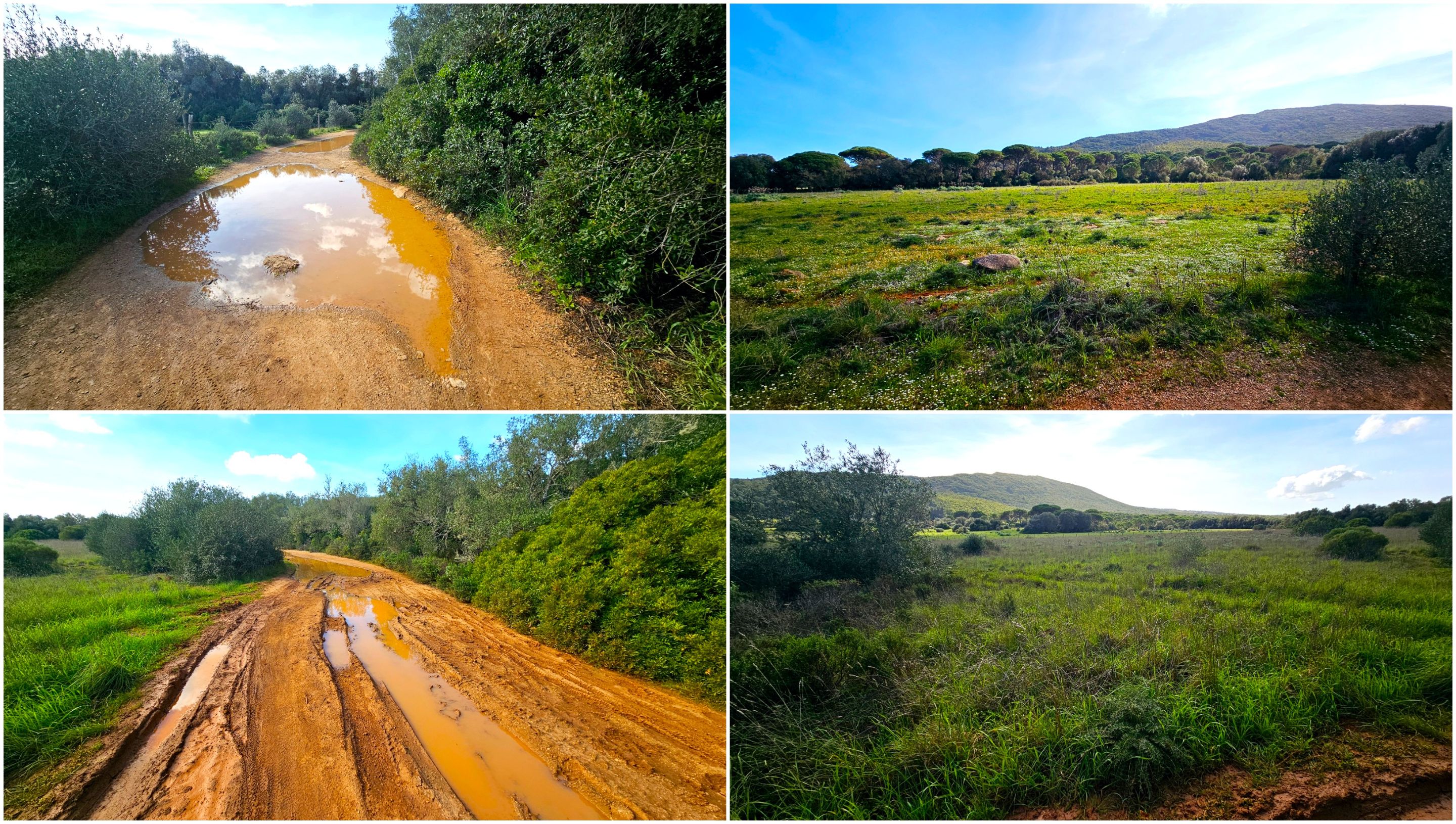
The "Alto do Jaspe" mountain is known for being usually over 150 meters high a very humid place in winter but at the same time with very high temperatures in summer, the rain that predominates in the Mediterranean landscape makes the substrate have that combination of calcareous, limestone and clayey rock therefore it meets the conditions for some species of orchids to grow without any problem, according to the bibliographical reference this species: "grows at altitudes between 850-1100m.a.s.l" however sighting it today below 200 meters was an interesting contribution for the scientific community since it can be found lower down.🌍✍🏻
La sierra "Alto do Jaspe" es conocida por esta normalmente sobre los 150 metros de altura un lugar muy humedo en el invierno pero a su vez con temperaturas demasiado altas en verano, la lluvia que predonima en el paisaje mediterranico hace que el sustrato tenga esa combinacion entre roca calcarea, caliza y arcillosa por tanto reune las condiciones para que algunas especies de orquideas crezcan sin ningun problema, segun la referencia bibliografica esta especie: "crece en alturas de entre 850-1100m.s.n.m" sin embargo avistarla hoy debajo de los 200 metros fue un aporte interesante para la comunidad cientifica ya que se puede conseguir mas abajo.🚩👨🏻🏫
https://es.wikipedia.org/wiki/Ophrys_tenthredinifera

Already registered here🌷🧭/Ya registrada aqui🚩🌍
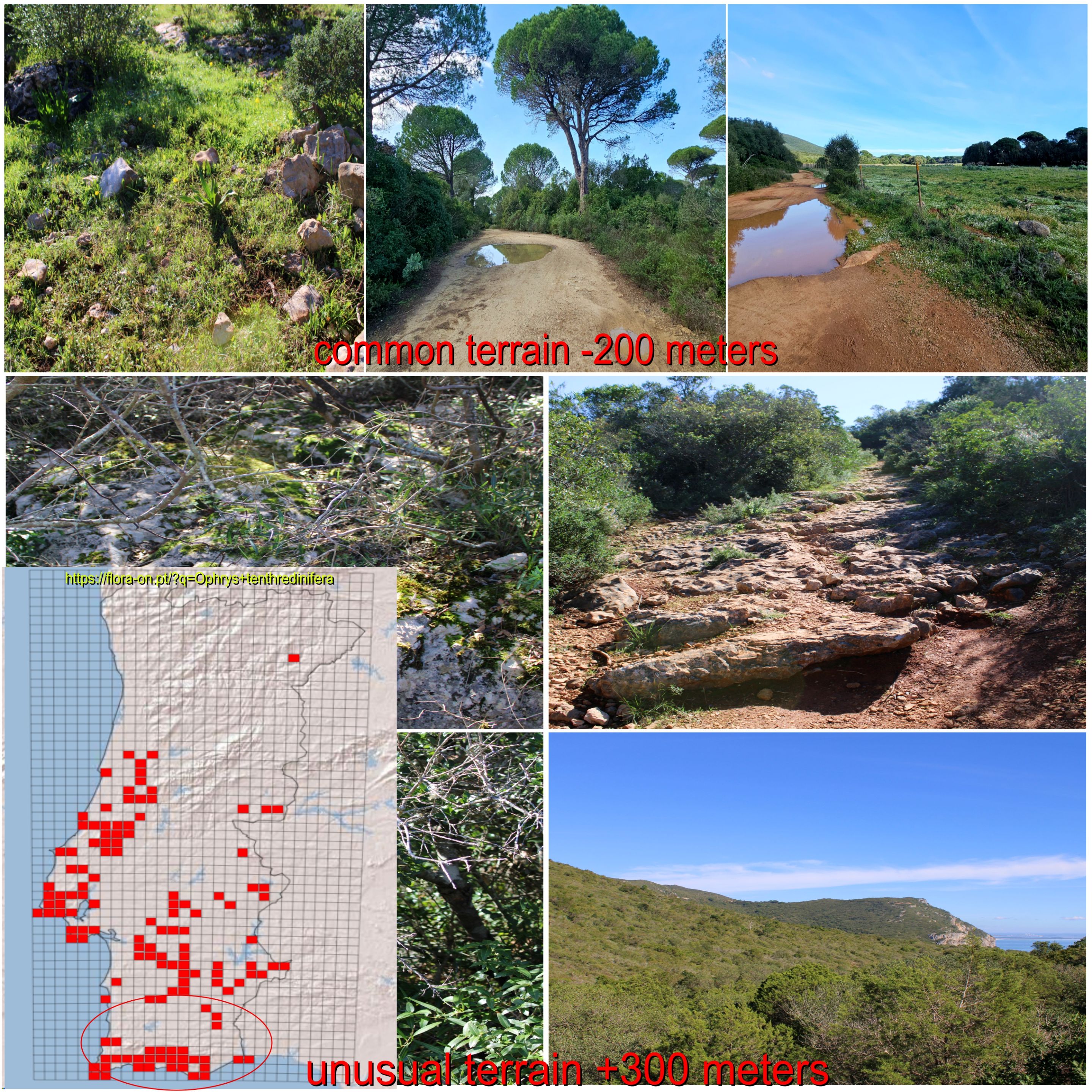
In this photo we can see the two different types of terrain of the same "Jaspe" mountain range, why do we see Ophrys on one side and not on the other? And of course we can see Barlia robertiana in both terrains without problem, it happens that I was making a two hour walk mapping the entire terrain of the Montana at different heights and even reached the peak, but if you notice something that is decisive for the growth of the species is that Barlia robertiana is less demanding with the substrate being able to grow in more arid and rocky terrain and can even develop among rocks, while (Ophrys tenthredinifera) which is a high altitude orchid is not seen in the highest area of the mountain because it prefers more clayey and not so rocky terrains or at least that is what I noticed in this area.🌍✍🏻
En esta foto podemos ver los dos tipos de terrenos diferentes de la misma sierra de "Jaspe" por que vemos en un lado Ophrys y en otro no? y claro podemos ver Barlia robertiana en ambos terrenos sin problema, sucede que estuve haciendo una caminata de dos horas mapeando todo el terreno de la Montana a diferentes alturas e inclusive llegue al pico, pero si notan algo que es determinante para el crecimiento de las especies es que Barlia robertiana es menos exigente con el sustrato pudiendo crecer en terreno mas arido y rocoso e inclusive puede desarrollarse entre las rocas, mientras que (Ophrys tenthredinifera) que es una orquidea de altura no se ve en la zona mas alta de la montana porque prefiere terrenos mas arcillosos y no tan rocosos o al menos es lo que note en esta zona.🌷🧭
https://flora-on.pt/?q=Ophrys+tenthredinifera

Barlia robertiana at 320 meters🌷🧭/Barlia robertiana a 320metros🚩🌍
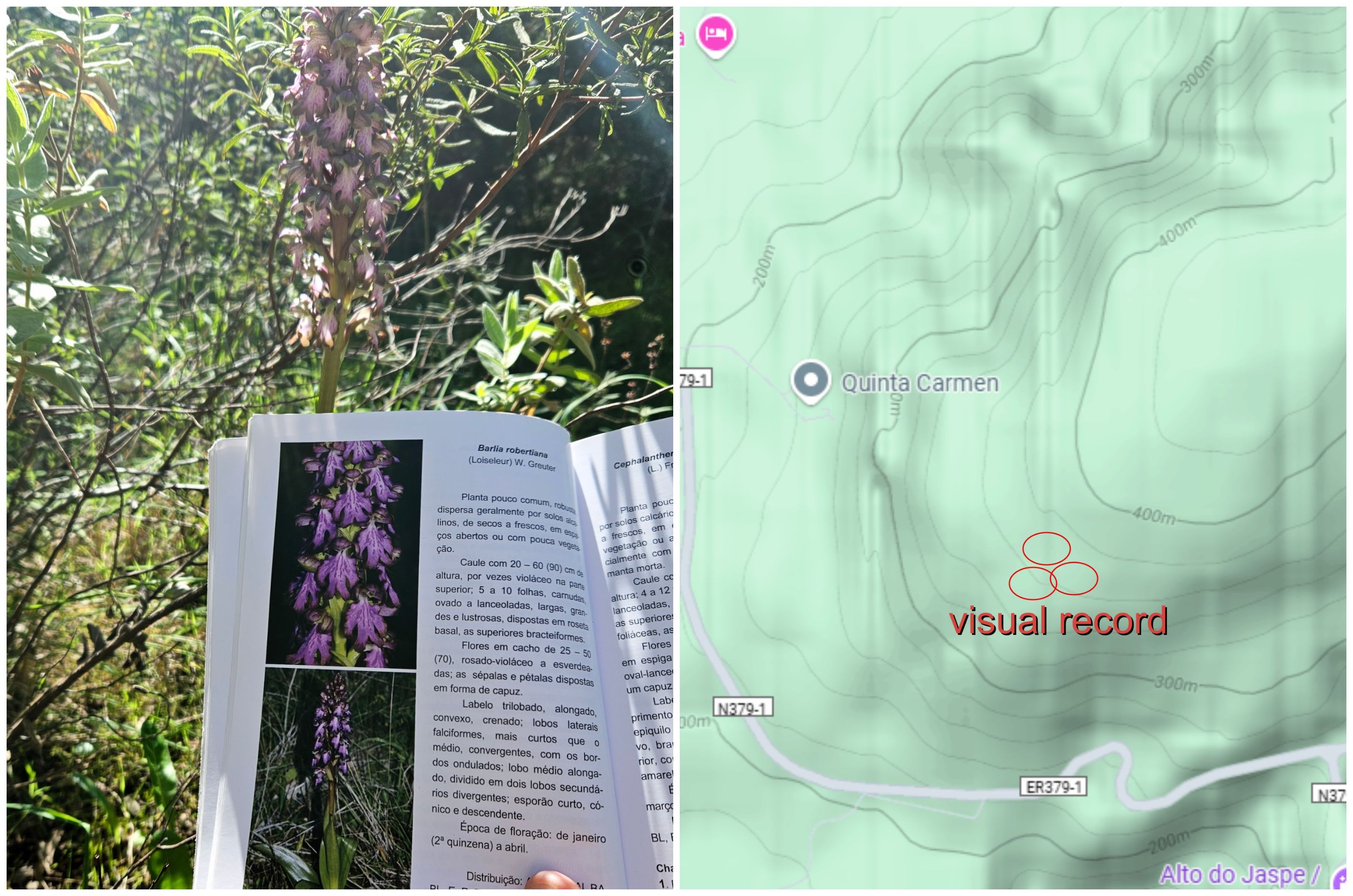
What I mentioned in the previous paragraph is that Barlia robertiana is not so demanding in terms of substrate and height, since I have seen it visually at more than 300 metres, it is literally spread throughout the mountain range and I have already seen it at more than 600 metres in one of my first posts! I saw three isolated individuals under this tree avoiding direct sunlight, in the middle of winter it is 20 degrees, imagine in summer, we have already said that Barlia robertiana does not like very humid environments and that is why we do not see it in the north of Portugal.👨🏻🏫🚩
Lo que mencionaba en el parrafo anterior que Barlia robertiana no es tan exigente en cuanto al sustrato y la altura pues a mas de 300metros obtuve registro visual de ella, literalmente esta esparcida en toda la sierra y ya la registre a mas de 600 metros en uno de mis primeros post! vi tres individuos aislados debajo de este arbol evitando el sol directo, en pleno invierno hace 20 grados imaginense en verano, ya dijimos que Barlia robertiana no le gusta ambientes muy humedos y por ello no la vemos en el norte de Portugal.🚙🧔🏻♂️
Source: (J.Brites, 2016)

#
Grassland biome🌷🧭/Bioma de pradera🚩🌍
Coming down from the mountain the biome is different and we have extensive open areas with small bushes and grass. I called this area "meadow" because it is quite flat and there are few tall trees and something we immediately noticed is the absence of rocky soil and few limestone stones detached from the mountain. What happens? I found a specimen of Barlia robertiana which my intuition concludes is that neither height nor substrate impede the species from developing.👨🏻🏫🧭
Al bajar de la montana el bioma es diferente y tenemos zonas extensas abiertas con arbustos pequenos y cesped, esta zona la llame "pradera" porque es bastante plana y se ven pocos arboles altos y algo que notamos inmediatamente es la ausencia de suelo rocoso, y pocas piedras calcareas desprendidas de la montana, y que sucede? me consegui con un ejemplar de Barlia robertiana lo que concluye mi intuicion tanto altura como sustrato no impede la especie desarrollarse.🌷🚩
Source: personal research


Location of Ophrys tenthredinifera🌷🧭/Local de localizacion de Ophrys tenthredinifera🚩🌍

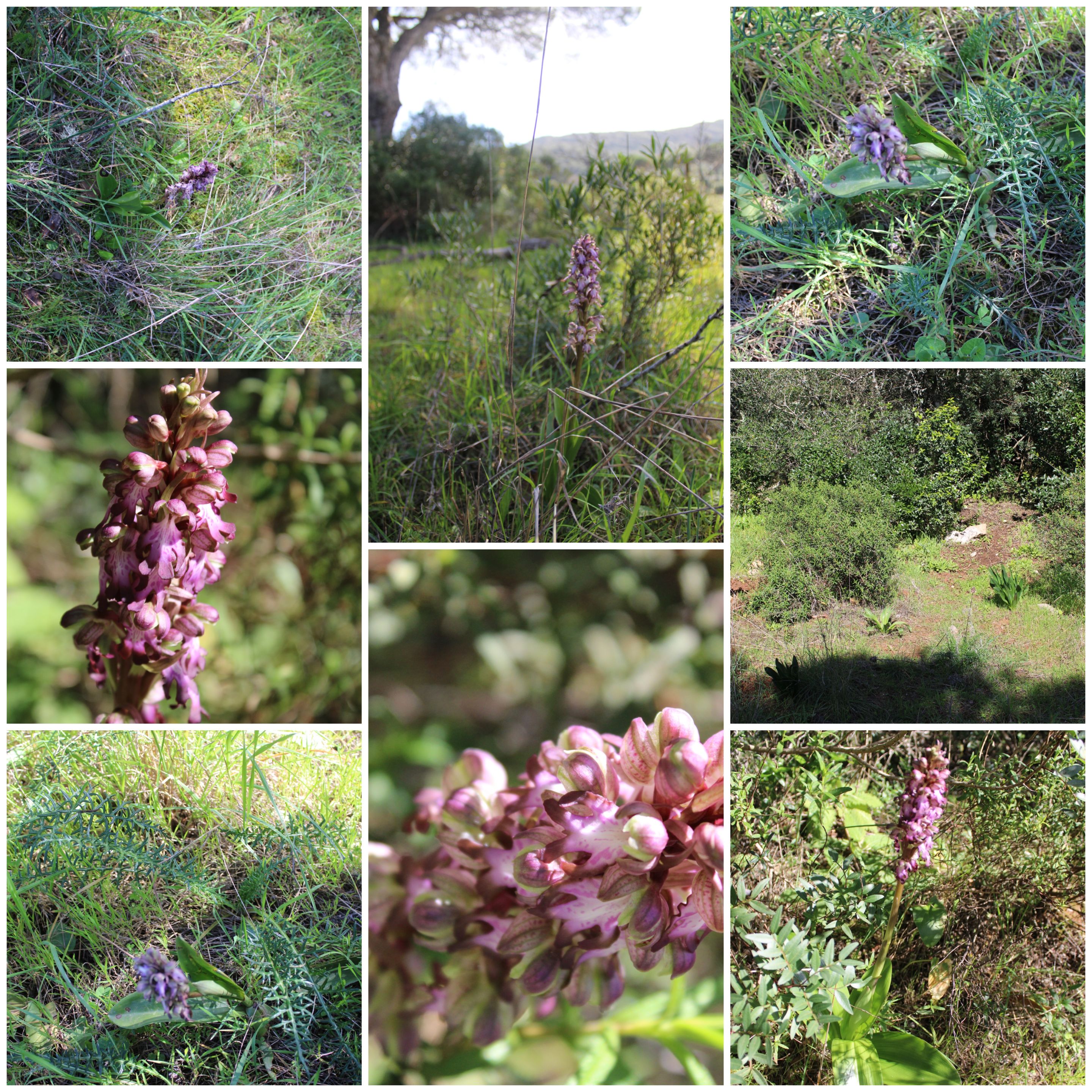
Before locating Ophrys tenthredinifera in the same sector there were four specimens of Barlia robertiana which tells me that the physical-chemical characteristics of the soil in this sector must be quite good, very alkaline and clayey and in reality when it rains there is a lot of mud, both species coincide with the month of flowering (February) however Barlia goes until April while Ophrys is (February-April) has one less month of flowering.🧭👨🏻🏫
Antes de localizar a Ophrys tenthredinifera en el mismo sector habian cuatro ejemplares de Barlia robertiana lo que me dice que las caracteristicas fisico-quimicas del terreno en este sector debe ser bastante bueno, muy alcalino y arcilloso y en realidad cuando llueve hay mucho barro, ambas especies coinciden con el mes de floracion (febrero) sin embargo Barlia va hasta abril mientras que Ophrys es (febrero-abril) tiene un mes menos de floracion.✍🏻🌷
Source: (J.Brites, 2016)

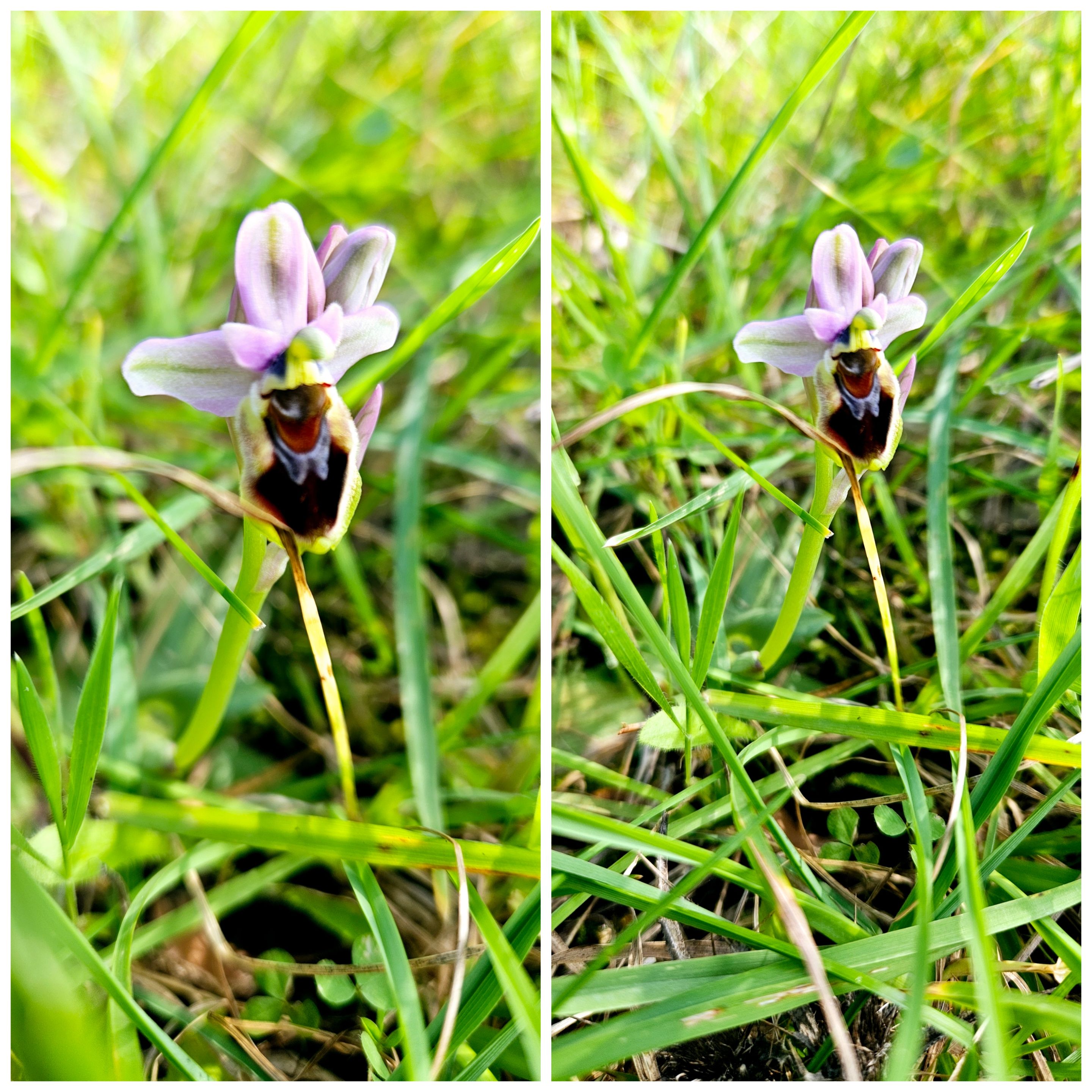
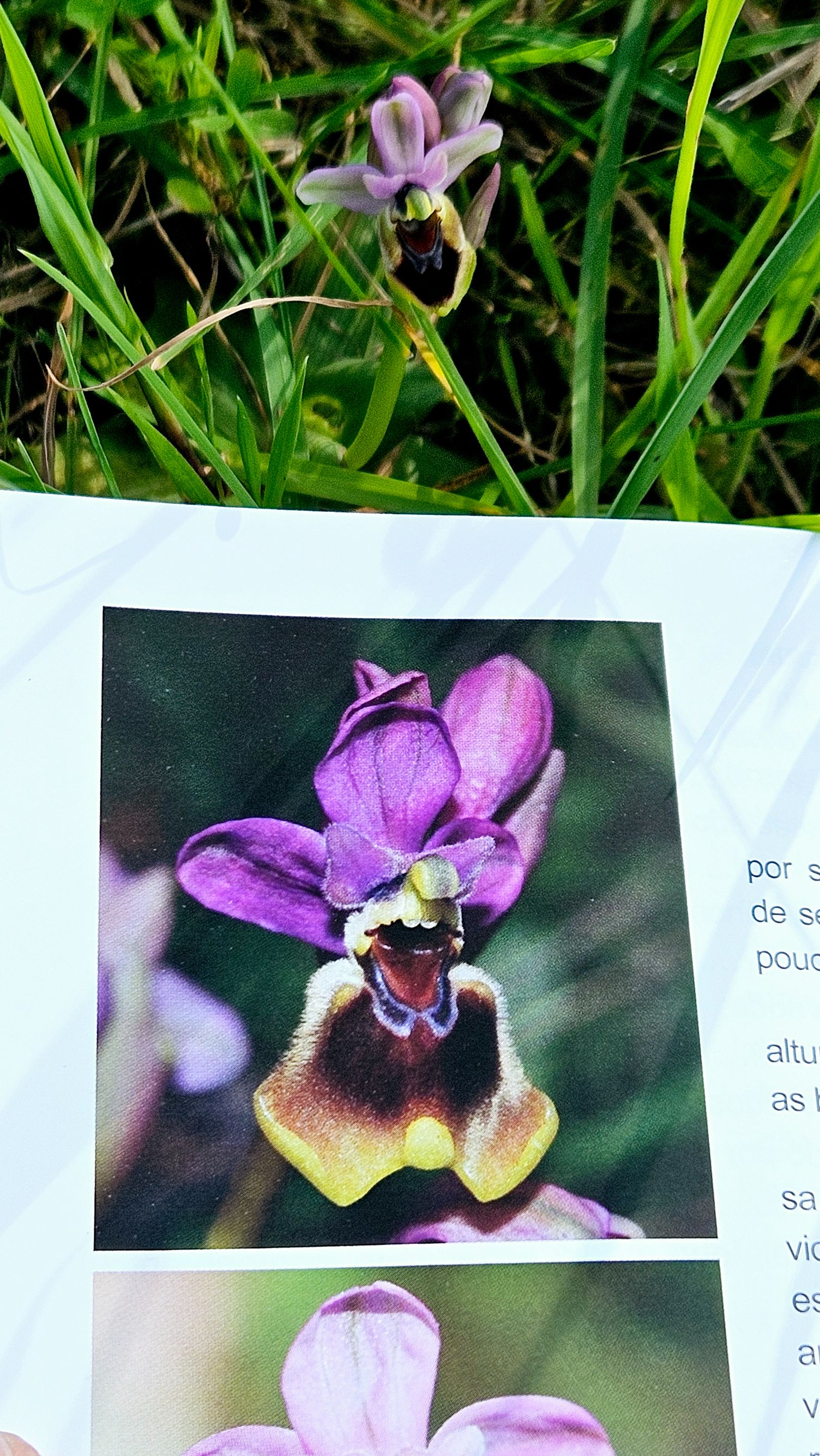
**identification reference👨🏻🏫🚩**
This plant is not very common to see and is distributed in alkaline soils and they range from dry to cool, in open spaces and or with little vegetation such is the case that we see below! It can grow to a height of 30cm and has 4 to 9 leaves, the flowers grow in the form of a spike, the sepals are pink and or violet, its flowering season is (February-April)🌍
#
Esta planta es poco comun de observarla y se distribuye en sueles alcalinos y van de secos a frescos, en espacios abiertos y o con poca vegetacion tal es el caso que vemos a continuacion! puede crecer a una altura de 30cm y tiene de 4a9hojas, las flores crecen en forma de espiga, los sepalos rosados y o violetas, su epoca de floracion de (febrero-abril)📸🌄
**Source: (J.Brites, 2016)**

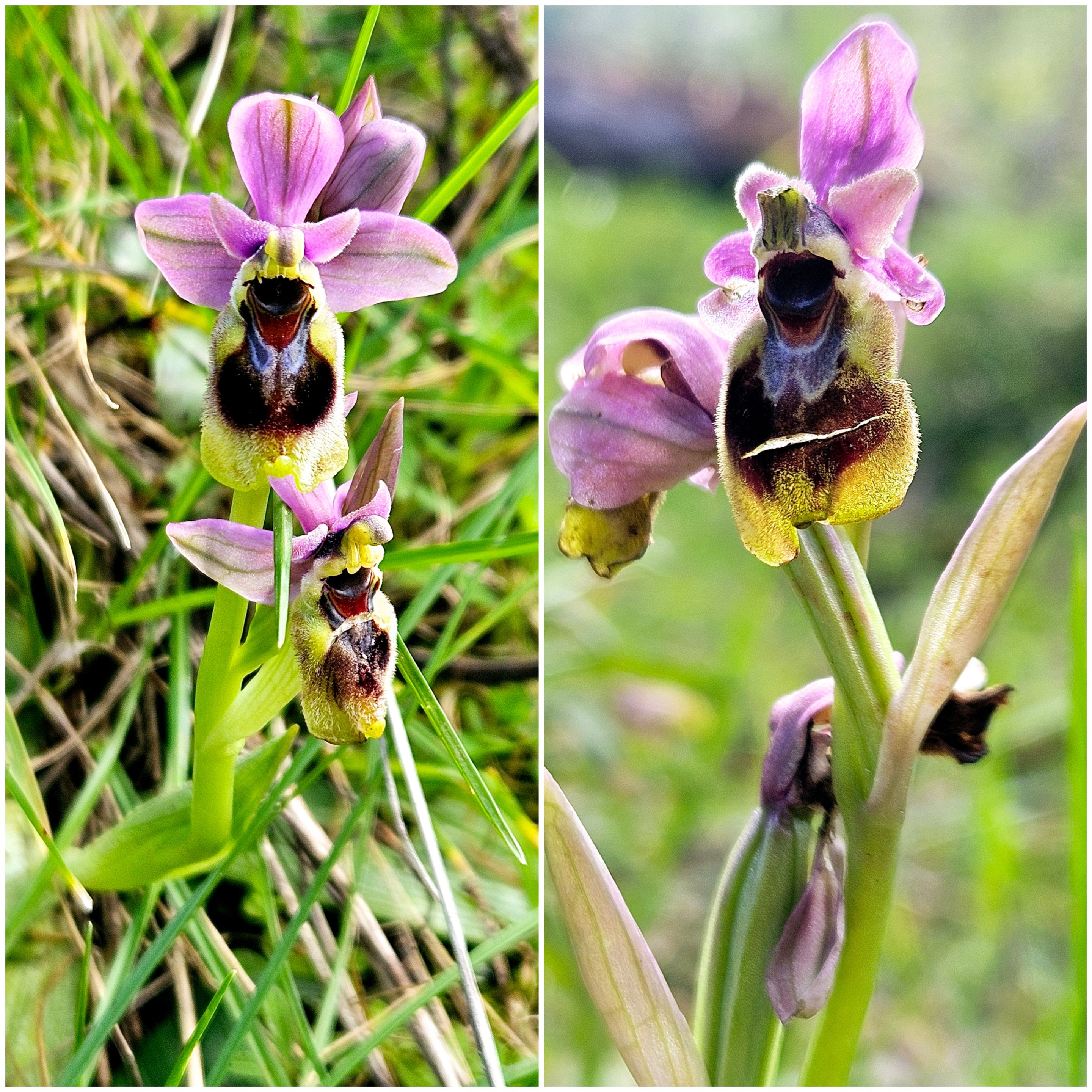
It is a terrestrial orchid and is commonly called "wasp orchid" because of the design of the flower, the labellum was strategically developed to look like the bee (Eucera longicornis) which is its main pollinator, it has an extension in almost the entire Mediterranean. The pollination is called "pseudocopulation" which is when one of the parts attracts the opposite sex to be fertilized, in this case the flower imitates the female of the wasp.👨🏻🏫✍🏻
Es una orquidea de tipo terrestre y se le llama comunmente como "orquidea avispa" por el diseno de la flor, el labelo fue estrategicamente desarrollado para parecerse a la abeja (Eucera longicornis) la cual es su principal polinizador, tiene una extension en casi todo el mediterraneo. La polinizacion lleva como nombre "pseudocopulacion" que es cuando alguna de las partes atrae al sexo opuesto para ser fecundado, en este caso la flor imita la hembra de la avispa.👆🏻🧔🏻♂️
https://es.wikipedia.org/wiki/Ophrys_tenthredinifera


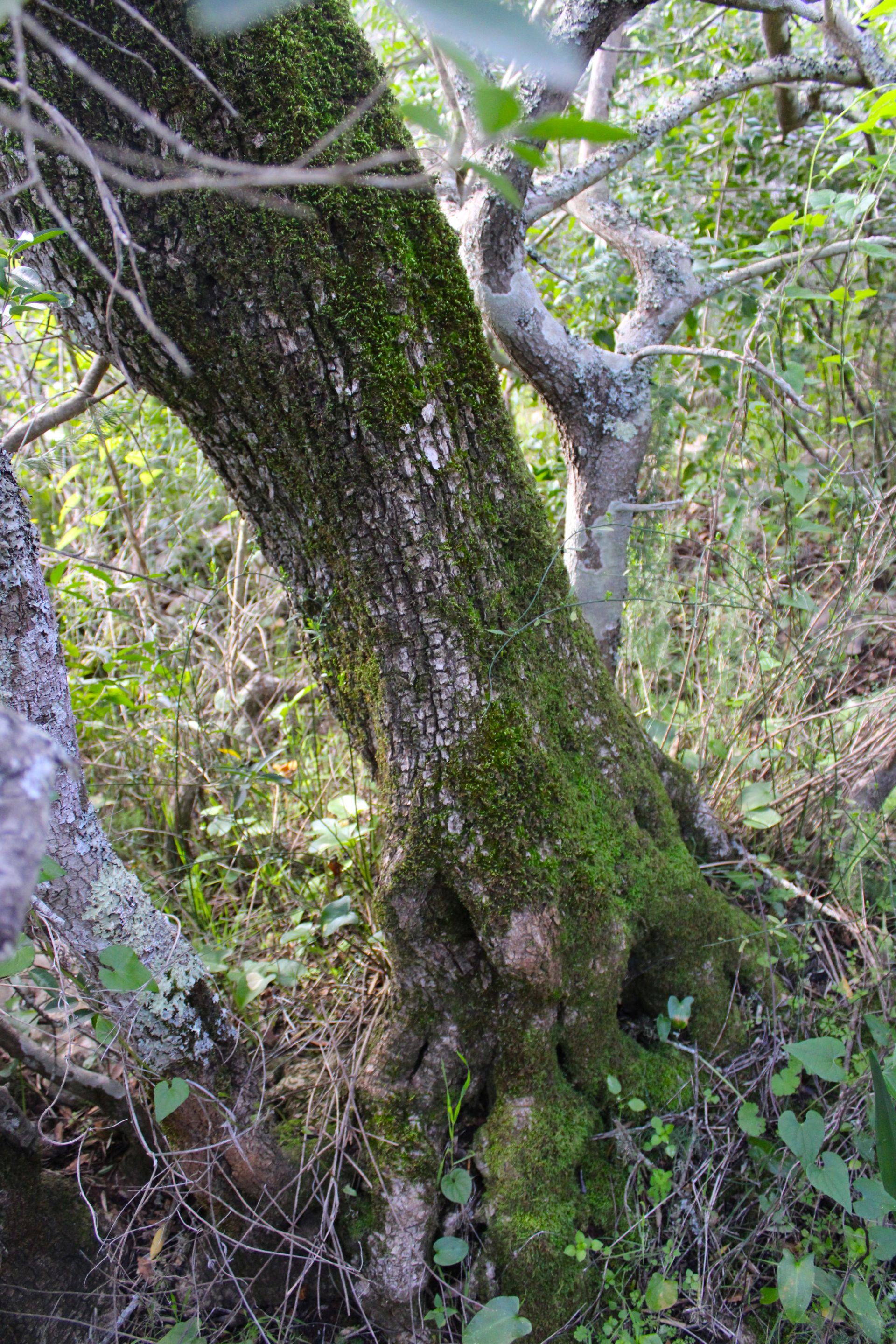

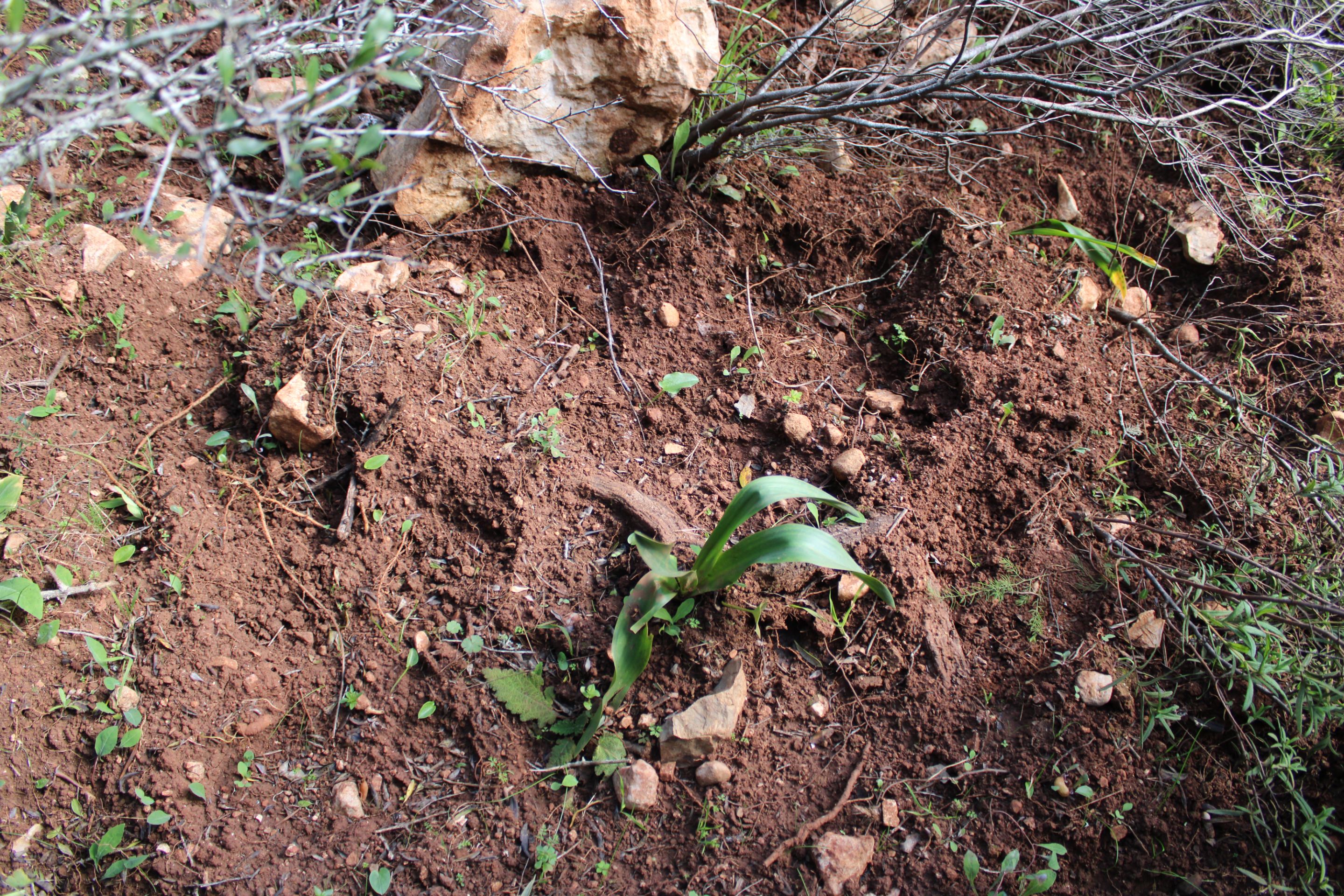
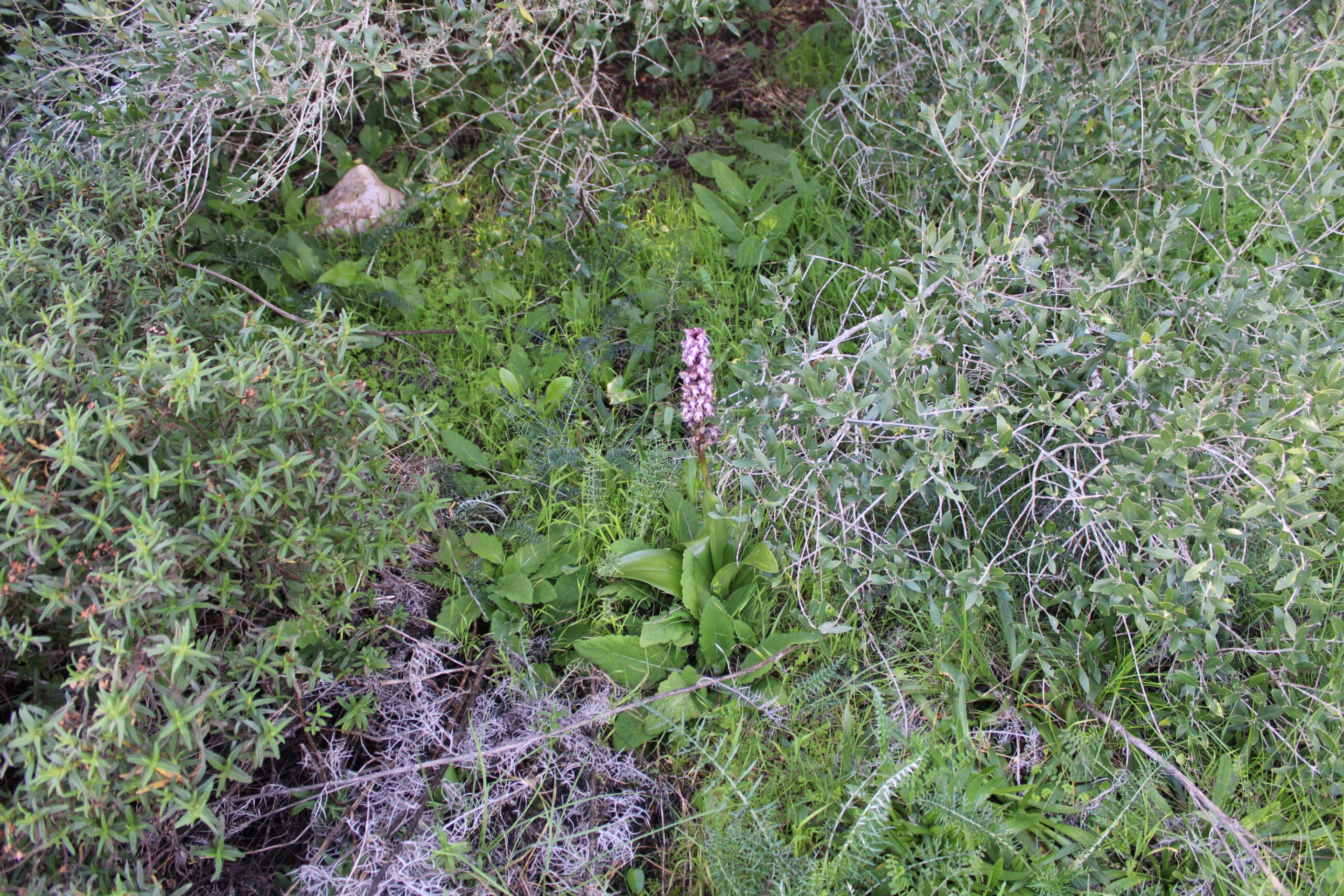
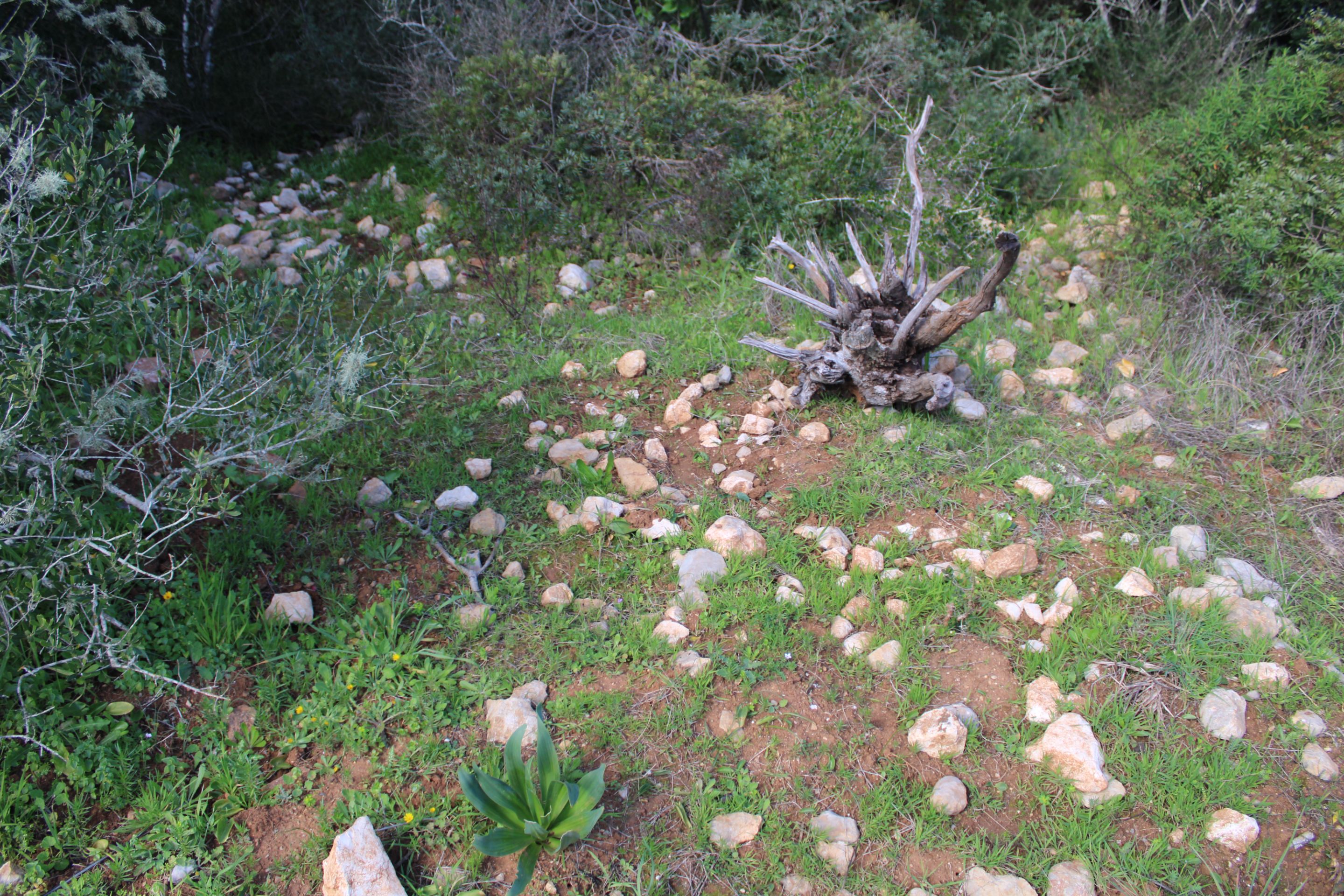
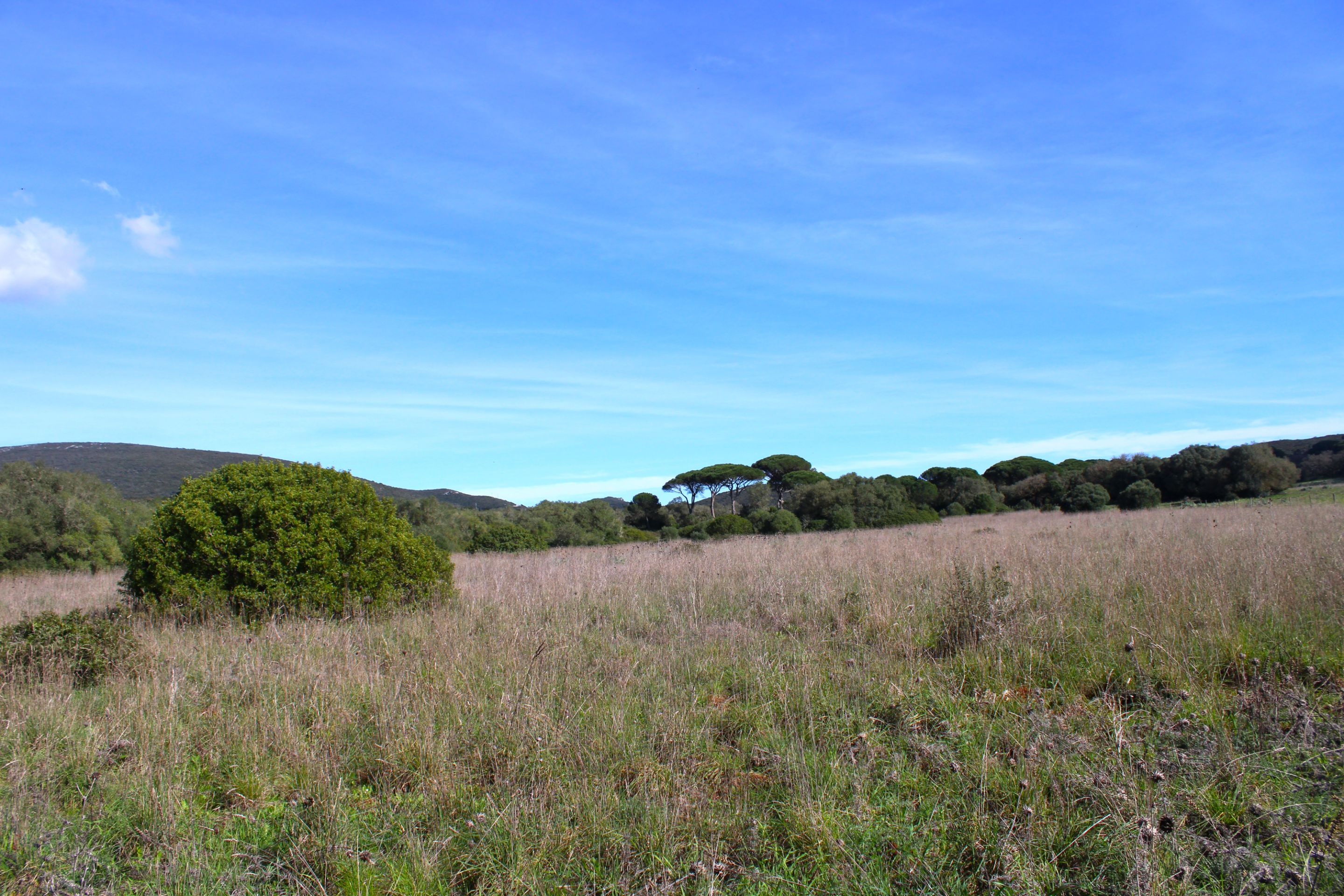
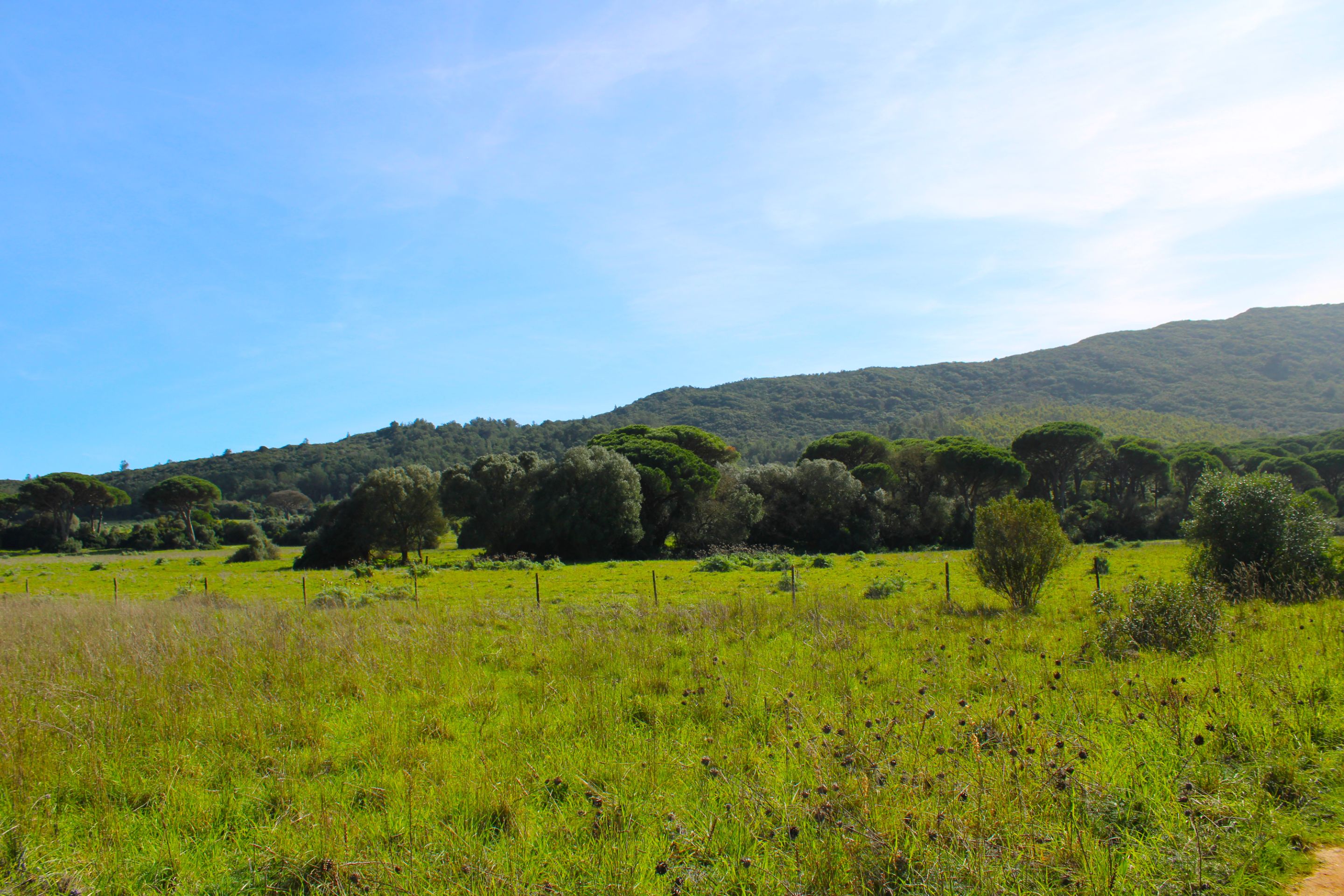
IMG_7679.JPG (https://files.peakd.com/file/peakd-hive/biologistbrito/23tbuDDiGimRQsxdvGiTY1BPCTUJWJSaFW7pLKpamyiH2A8bxm1vyJ9hDBuVXkKufieD1.JPG)
BeFunky-collage - 2025-02-24T113709.891.jpg (https://files.peakd.com/file/peakd-hive/biologistbrito/AKF98sdrFr6f2D9qyEh2CbR6s5cxM4zu4CPyMFozdPM3oqw9GDSjbEpiguJQW8X.jpg)
46aP2QbqUqBqpx5c7Zikd2HFMqywJNqDeZVr22vYLLq3mmDMvC912rHcgZVsjPXr3wLjkA8LKLBDRLTxVkouUowGoPo3.gif (https://images.hive.blog/DQmciMT2pJfBoY7qDgsnWBvroJHxJnDwidmmXaH9kKsn8uF/46aP2QbqUqBqpx5c7Zikd2HFMqywJNqDeZVr22vYLLq3mmDMvC912rHcgZVsjPXr3wLjkA8LKLBDRLTxVkouUowGoPo3.gif)
**DNA is an organization to foster and DENSIFY NATURE-APPRECIATION which aims to establish REPORTS OF BIODIVERSITY DATA that is contributed by all of us Hiveans and subsequently cataloged.**
**Therefore DNA searches for HIGH-QUALITY posts that aim to DESCRIBE and determine the BIODIVERSITY AROUND YOU with added EXPLANATIONS and INFORMATION. For these informative posts they offer a CURATION SERVICE using the @dna.org account. It is also a CURATION TRAIL. Just add the #dna TAG if you think that any of your posts is what they are looking for.**
#
THANKS FOR READING ME (PHOTOS AND VIDEOS OF MY PROPERTY) / GRACIAS POR LEERME FOTOS Y VIDEOS DE MI PROPIEDAD🙂🧠🦾👍
(https://images.ecency.com/DQmbCHnDKMbWHZGL9pemNAuKECHmCrfadtMGuoNeBv2iSwg/image.png)
(https://images.ecency.com/DQmQzZ2WedGhc1AebPYVRBgfXAzDE9we5e1BkuDrJo1u7gR/bloggif_6749fa09c37e6.gif)
* https://es.wikipedia.org/wiki/Ophrys_tenthredinifera
* https://flora-on.pt/?q=Ophrys+tenthredinifera
[//]:# (!worldmappin 38.44947 lat -9.06560 long d3scr)